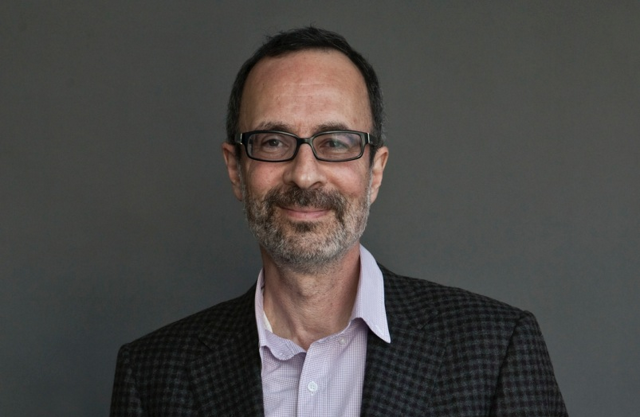
Woody Allen, as expected, did not turn up in LA to accept his Cecil B DeMille Award from the Golden Globes, but we were treated to three things instead – an introduction by Emma Stone, an acceptance by Diane Keaton and the lovely montage of Allen’s films. The montage was supervised by Robert Weide, the director of Woody Allen: A Documentary in 2011.
In our exclusive interview with Weide, we discussed how he got the job as ‘content consultant to the Cecil B. Demille tribute package’, Woody Allen’s own input into the piece, insights into what didn’t make the cut, the the story they tried to tell in 150 seconds. Weide spoke to us from his home in LA.
(You can watch the entire Golden Globes presentation as our Video Of the Week)
Let’s start with the Golden Globes. What was the brief and how did it happen?
I read somewhere in one of the trades that Woody was going to be given this Cecil B. DeMille Award at the Golden Globes and I really chuckled when I saw it because I know Woody well enough to know what was behind it. When I next communicated with him, he confirmed exactly what I thought. He was sort of coerced into it in a friendly way by his people– his management, his publicist, Sony Pictures Classics, who releases his films (in the U.S.). They’ve got Blue Jasmine and they’ve got his next one [Magic In the Moonlight].
So I wrote to him and I said, “You’re not coming to LA to get this thing are you?” And he wrote back and said, “No, absolutely not. I tried to get out of it but everybody tried to talk me into it. But I made it very clear I would not come out and accept it. And then they said, ‘Well you don’t have to.’” He said, “As long as I don’t have to accept it and don’t have to watch it, you can do whatever you want.”
I knew that the next step would be that they would want to do the clip reel and I knew that Woody would be very, very anxious about that, very concerned about it. And because he and I got on so well with the documentary and we remained friendly, I volunteered my services in a very general way. I said, “Look, when it comes to them doing the reel, If you want me to supervise it or consult with them or be your eyes in the editing room, let me know and I’ll be happy to do it.” And he wrote back right away, “Absolutely, that would be great if you would do that.”
So did Woody have any input into what you did. Or did he give you any pointers of anything that what he wanted to put in there?
Yes. More so than on the documentary. It’s interesting. This was a very different animal from the documentary. In the documentary he absolutely stayed out of it.
Whereas [the Globe montage] is so fast paced. The total running time that we were allowed was 2 and half minutes. Which in an odd way adds more importance to anything you use because you’re trying to sum up a 45 year career in 2 and half minutes.
So the first thing I did was I said to him, “If you want to give me any general input of stuff that you know you would like or would not like, let me know,” and I got a fairly lengthy email from him saying his concern was that it was all going to be his so-called “early, funny films.” And there is a tendency to go for the early stuff because when you’ve got a couple of seconds for a clip to run, the easiest thing to register is some kind of an easy sight gag or a quick visual joke. Whereas the more involved stuff or the more dramatic stuff, it’s hard to get a sense of it in a couple of seconds. So he knew that would be the tendency to drift more into those easy gags.
So he gave me a list of things that he thought wouldn’t be too painful for him to have included. Now it was a very general list of suggestions. He said, “You can start here and be in touch along the way.” As it winds up, that list that he sent was sort of a helpful guide but much of what we did were our own choices.
By “our own” I should say that the guy who actually was the editor, is a very fine editor named Nicholas Goodman. And Nick was the guy sitting at the Avid actually making the cuts. And he would just send me things, sometimes several times a day. And then I would comment on it, I would give him my input.
I would send Woody things every now and then and he would look at it and say, “Oh god, please don’t use this clip. I can’t stand to see this” or “Can you please find a way to get Geraldine Page in it because she’s such a wonderful actress and her work in Interiors was so great” or “In your sequence of these wonderful actresses, can’t you get a shot of Barbara Hershey?” It would be those kind of suggestions of things, knowing the time constraints, things he thought were important to use — not trying to show off his work so much as trying to highlight people who have been in his films. That was the big concern. And some people we couldn’t.
He said there should really be something of Martin Landau in there. Also Michael Caine. Caine won an Oscar [in Hannah And Her Sisters]. Sean Penn we had in there for a while and then he was cut at the very last second. It was all about time constraints. It was all about trying to get this thing down to 2 and a half minutes. Which was a huge, huge challenge.
It’s interesting that you say he sent you that list because in everything I’ve come across with Woody is that he doesn’t watch his films back. So he’s memorised all this films and he knows those moments?
Yes that’s a very good point that you raise. You’re correct on both counts. He does not watch his films. I mean he was nervous about even seeing my documentary. And it wasn’t worry that I screwed it up so much as he would have to sit and watch these clips from his films and watch his own face talking about them for more than three hours. And the idea pained him terribly.
It is literally true that he doesn’t watch his films and if he happens to be flipping around on the satellite while he’s on his treadmill or something , if he lands on one of his films, he cannot change that channel fast enough. But yes, I find that he has an amazing memory. Of course, he writes the films, he shoots them and then he’s in the editing room with them, watching them over and over and over again. I’m sure it’s locked in his mind.
Also, we had use of his editorial expertise. Nick and I both like the scene that is used in my documentary of Woody playing the cello in the marching band in Take the Money and Run, and he thought, yes, that might be a worthwhile clip. But that scene, which on screen, it’s probably a good minute, to distill that into 3 seconds, we had to pick two or three shots, string them together in a way that made sense and the first couple of iterations that we had, Woody said, “It doesn’t work, it’s not funny, you’ve gotta to go back.” And we did, until we made it work, and he said, “Okay, that works fine.”
It was really very helpful to have his input because he is Woody Allen after all.
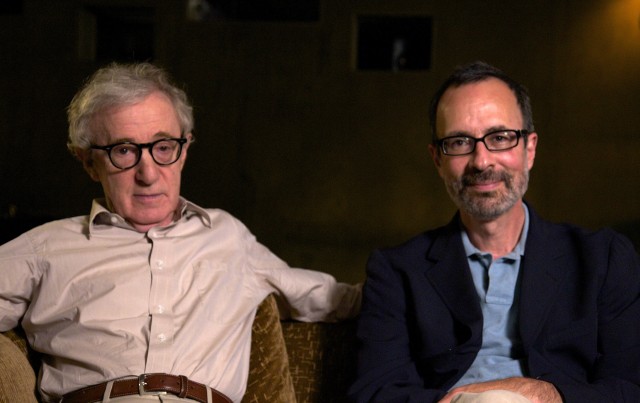
I want to talk about some of the moments. Opening with Stardust Memories. Was there ever a time you were you weren’t going to open with that clip.
No. Nick and I thought it was the perfect way to kick it off. And just by having it end with the joke of the “early funny films” as an introduction to the early funny films, we thought it worked great.
[Woody] wasn’t crazy about opening with the ‘Stardust Memories‘ clip because even though he wrote the line about the early funny films, it’s become such an overused line and it kind of haunts him to this day. Because of it, people do refer to that period as “the early funny films” and he’s a little bit sick of it. It was almost like he didn’t want to encourage that any further. But then eventually he got to see that was a reasonable way to open it. It helped set up those first few clips before we move on. So he backed off from that. Eventually he said, “You win.”
I’ve always wondered if he hates that term.
Because the documentary was in two parts, I was thinking of subtitling part one and part two, and I was going to call part one “The early, funny years” and part two “Sitting at the grownups table,” because he once said “Comedy is kid’s stuff is but drama is where you’re sitting at the grownups table.” He did not like that idea (of the titles). He said, “Please don’t title it ‘the early funny films.” He was just so sick of that phrase.
Hollywood Ending was in there. There were those films that were far less loved and I’m sure that people don’t know that were given prominence. Was that something you wanted to bring to the table?
Nick put that in. ‘Hollywood Ending‘ is an overlooked film and again when you have 2 and a half minutes you sort of want to hit the more iconic moments from the more memorable films. So that was sort of an exception. Although I thought to just have the things that we’ve all seen over and over again, maybe to vary from that was a good idea.
And I like that clip. First of all, it is a very funny bit. Regardless of whether the general public took that film to heart, that is a funny bit from the film. But we liked it because It was Woody playing a director. There was something very charming and appropriate about seeing Woody, albeit as a character in a film, on set and directing. We thought that was appropriate.
The other thing I want to talk about from the montage is the Vicky Cristina Barcelona bit where Scarlett Johansson says ‘You’re going to have to seduce me’. It wasn’t a line that stuck out for me in all the times I’ve seen the film. Did you pick that moment?
The editor, again. He’s a very good editor. He and I discussed the structure of the thing. And I knew that I wanted some sort of montage within the montage that featured these great actresses, these beautiful women.
The structure was: the early funny films, the weightier films, something about the women – just to show off the actresses. Because Woody’s main thing was, “show the actresses, give them credit. Show all these great actresses I’ve been lucky enough to work with.” He really talks that way. After the actresses, there would be some stuff about death or whatever. From there we kind of had to wrap it up because that’s 2 and a half minutes.
So what Nick had to do, and he did a great job, was find a way to get into these sections, little transition points. The “early funny ones” was easy, that was ‘Stardust Memories‘. And then he had the Hemingway line (from Midnight in Paris), “If you’re going to be a writer be the best writer.” And to get into the women, he thought that that was a good way to launch it as sort of a joke — Scarlett Johansson saying, “you have to seduce me.”
Now the clip that he originally had to follow that was the silly moment from Love And Death when he’s on the balcony (at the opera), he’s flirting with the countess. He sort of wags his finger at her and she’s behind the fan. And that always made us laugh when we went from Scarlett Johansson saying ‘you have to seduce me’ to Woody in Love And Death trying to seduce the countess.
And then we went on from there and Woody said, “No, I can’t stand to see that shot of me wagging my finger at the countess,” and then Woody said, “Try the clip from ‘Love and Death‘ where I’m in bed with Diane Keaton and I make a move and she says ‘no, not here’,” and of course it works great. So that kind of kicked off that section.
And you had the perfect ending with the line from Annie Hall as well. It must have been a gift to end on?
Yes. Nick, found a structure. It starts of with Woody saying, “Why am I bothering to do any of this, why am I making films at all?” So you open with this Existential question. And then you get into the thing about death and “Doesn’t death frighten you?” Then he has that question from ‘Love And Death‘ – “so what have I learnt from all this?” So a question is raised and then at the end of the film he brings back this notion from Annie Hall that – I’m paraphrasing here – “we create art because it’s easier to get things right in art than it is in real life.”
So it starts with a question and then the question is answered at the end. That was beyond what I thought could be accomplished in that time. You’re lucky enough just to get a few memorable clips and to show a few faces. But the fact Nick found this structure to hang it on was great.
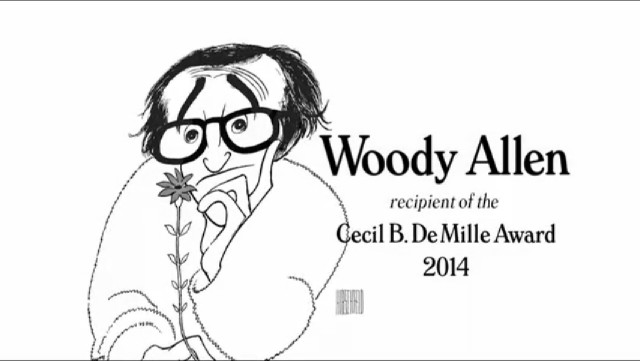
I wanted to ask you about the illustration by Al Hirshfeld. How did that come about and who chose that.
Again that was Nick. All that stuff is very tightly controlled by the woman who has the exclusive (Hirschfeld) gallery and runs his estate, a woman named Margot Feiden, who was with him for years and years. So they had to licence that stuff. It’s not cheap, but she was very co-operative and they made a deal.
Nick really made the case for it. He said, “Well, Hirschfeld is quintessentially New York and it’s just a charming little thing,” and I said, “Look, rather than me second guess Woody, we’ll put it that in there and see if he responds.”
I really thought Woody would say, “No, find something else.” He said nothing about it one way or another. Which, you know in the world of Woody, that’s your approval. It’s like how when actors work with him, at first they get nervous because he doesn’t come up to them afterwards and slap them a high five and say ‘that was great’. So they all feel like ‘Oh he doesn’t like what I’m doing’, and then they realise that him not saying anything is his approval. If he doesn’t like something, he’ll let you know. So by virtue of Woody not commenting on the Hirschfeld thing one way or another, we took that as his seal of approval.
—
Weide is finishing off a new romantic comedy series for Sky Atlantic in the UK called ‘Mr Sloane‘, starring Nick Frost. We hope to catch up with Weide again to discuss the making of ‘Woody Allen: A Documentary‘ sometime soon.

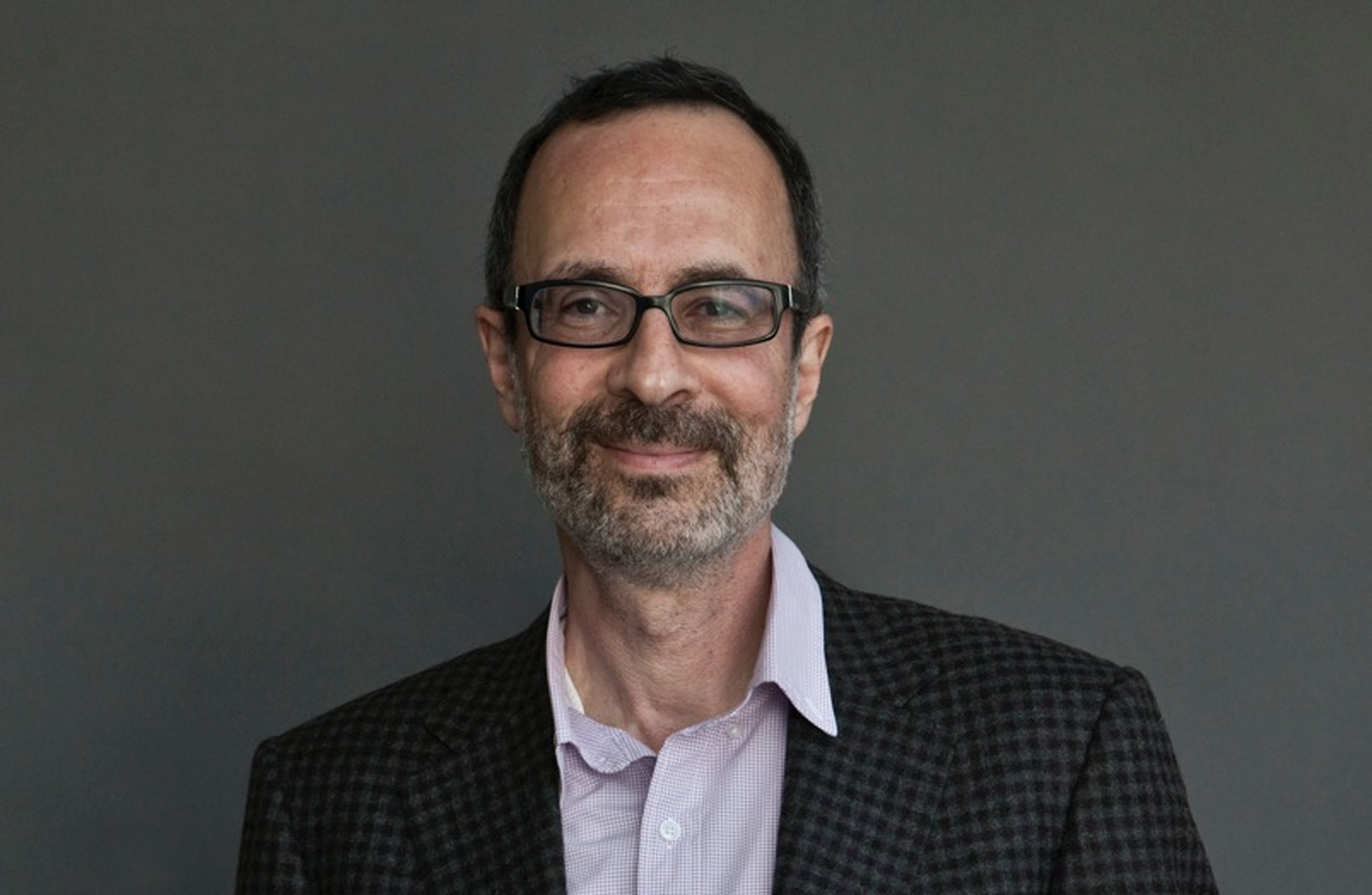
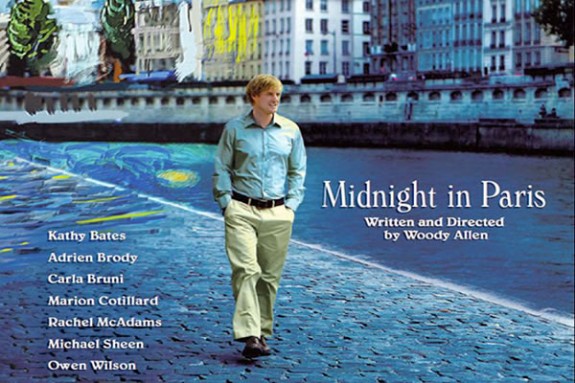
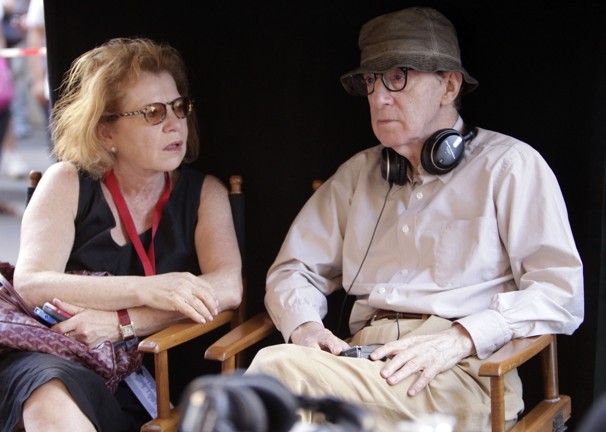
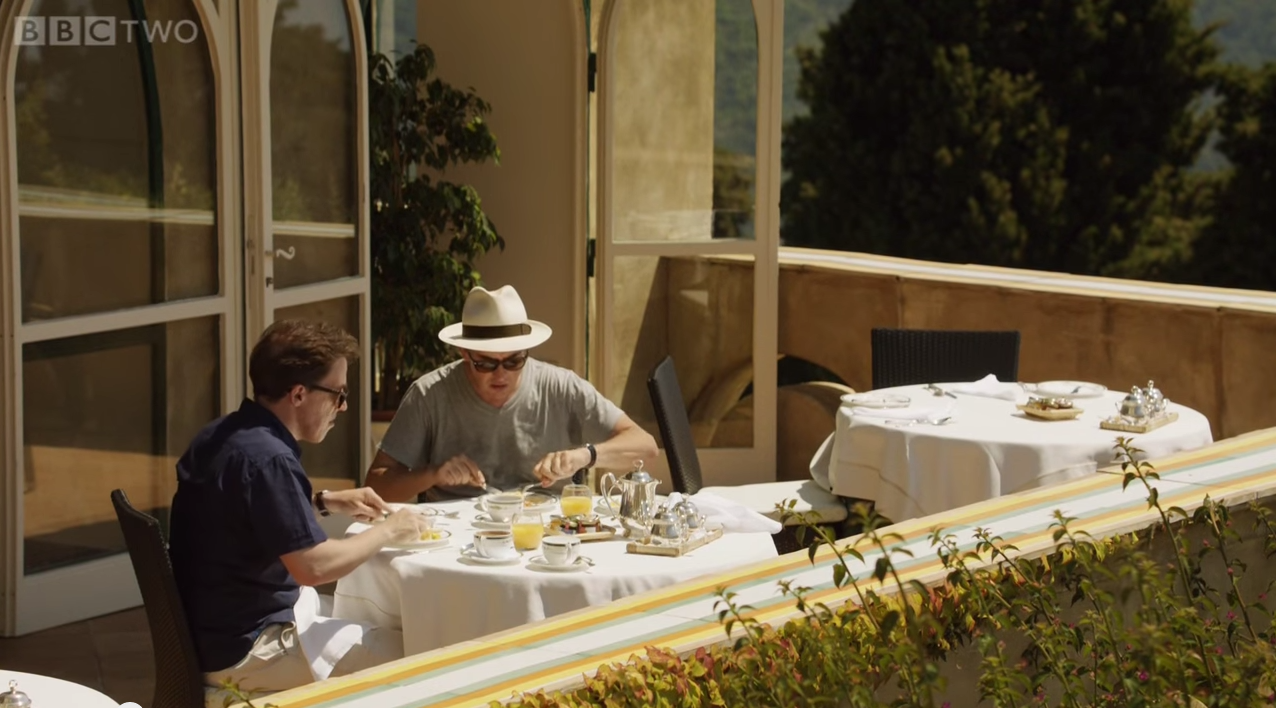

6 Comments
Great insight from the Man himself. Thanks!
Good interview..so lucky that he can say he’s ‘friendly’ with Woody Allen.. *sighs*
Also, there’s an error-Caine won for Hannah and it’s wrongly given as C&M.
Colossal kudos to Robert Weide and his team for a job well done on the Woody montage and also for his work on the documentary.
Great interview. It’d be even greater to support it with the montage itself! Best regards ~
It’s on our YouTube channel!